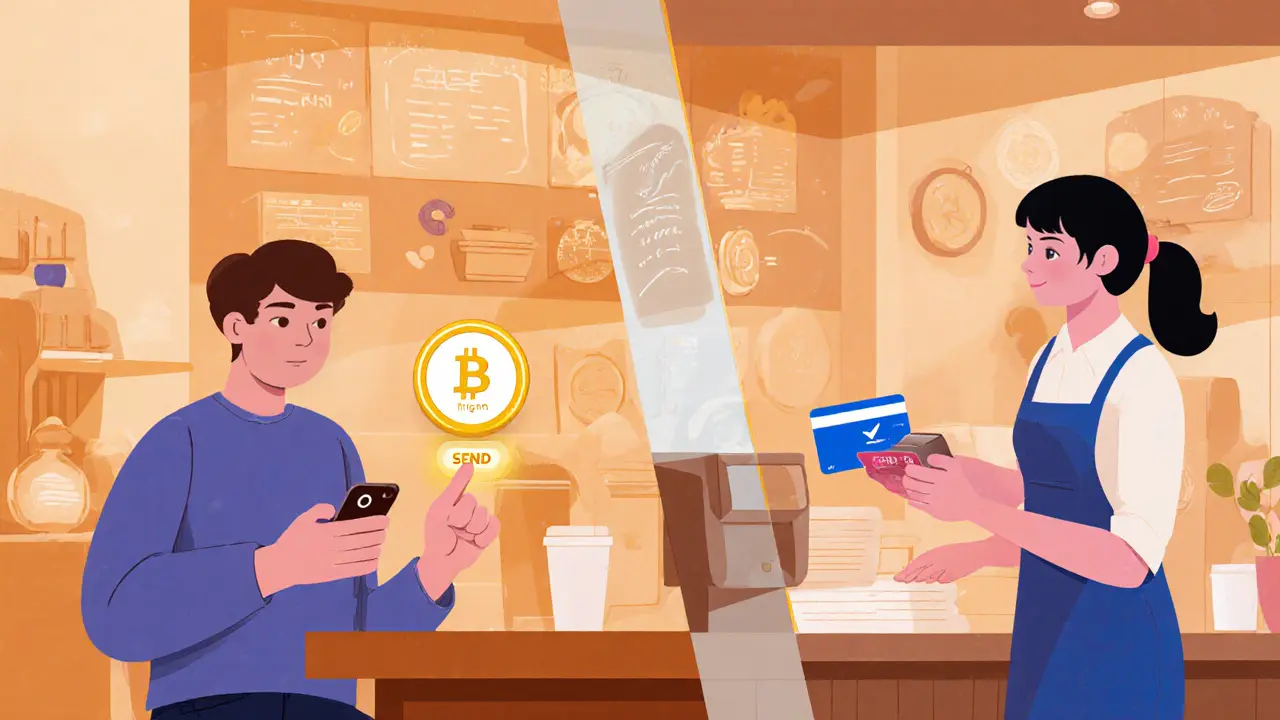Crypto Payment TPS – Understanding Transaction Speed and Scaling
When talking about crypto payment TPS, the number of transactions a blockchain can settle each second. Also known as transaction throughput, it tells you how fast payments move on a network. In short, crypto payment TPS is a core performance metric; higher TPS usually means lower latency and cheaper fees. A simple triple: Crypto payment TPS measures transaction speed, higher TPS enables faster payments, and TPS depends on consensus design. If you compare Visa’s 65,000 TPS to Bitcoin’s ~7, you see why throughput matters for everyday commerce.
Why TPS Matters for Crypto Payments
One of the biggest hurdles for mass adoption is Scalability, the ability of a blockchain to handle growing transaction volumes. Scalability directly ties to TPS: a network that can’t scale will choke as users increase. Layer 2 Solutions, off‑chain protocols that batch or route transactions are the most common fix. They let a base chain keep security while a secondary layer pushes TPS into the thousands or even millions. For example, the Lightning Network on Bitcoin processes micro‑payments off‑chain, effectively sidestepping the 7‑TPS limit. The triple here: Scalability requires higher TPS, Layer 2 Solutions boost TPS without compromising security, and Improved TPS reduces transaction fees. Understanding these links helps you pick the right chain for retail, gaming, or cross‑border transfers.
Another piece of the puzzle is the Consensus Mechanisms, the rules that nodes follow to agree on the state of the ledger. Proof‑of‑Work (PoW) like Bitcoin’s limits TPS because each block needs time and energy to solve puzzles. Proof‑of‑Stake (PoS) and newer Byzantine‑Fault‑Tolerant (BFT) designs can confirm blocks faster, pushing TPS into the high hundreds or low thousands. The choice of consensus creates a triple: Consensus mechanisms set the maximum TPS, Faster consensus lowers confirmation time, and Lower confirmation time improves user experience for payments. Real‑world use cases—such as buying a coffee with a stablecoin on a PoS chain—rely on sub‑second confirmations, something impossible on low‑TPS networks. Below you’ll find detailed guides, reviews, and analysis that unpack these concepts and show how to choose the right high‑TPS solution for your needs.
Crypto Payment Speed Comparison: TPS & Confirmation Times 2025
A 2025‑focused comparison of crypto payment speeds, covering TPS, confirmation times, fees, security, and which networks suit different payment needs.





